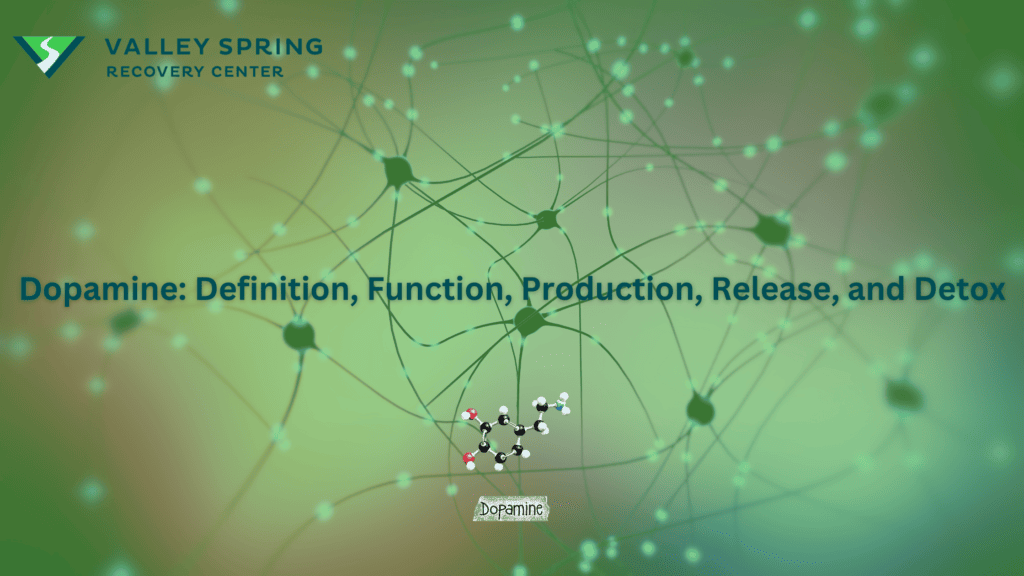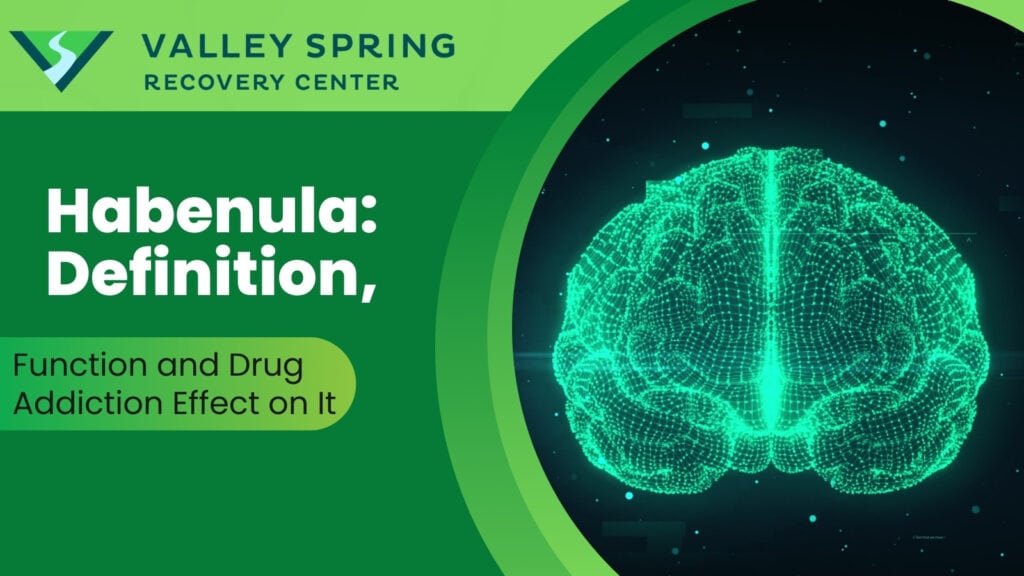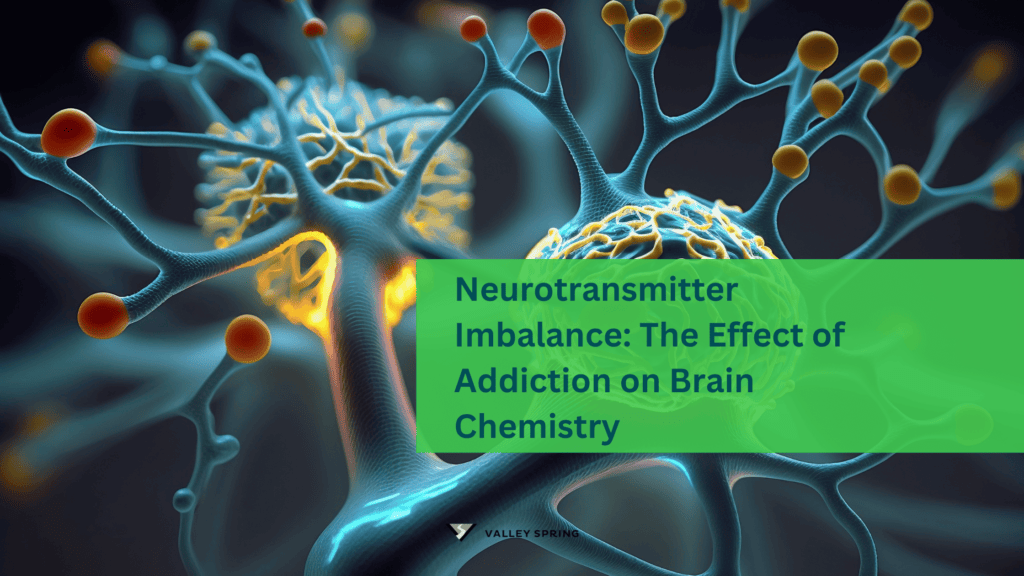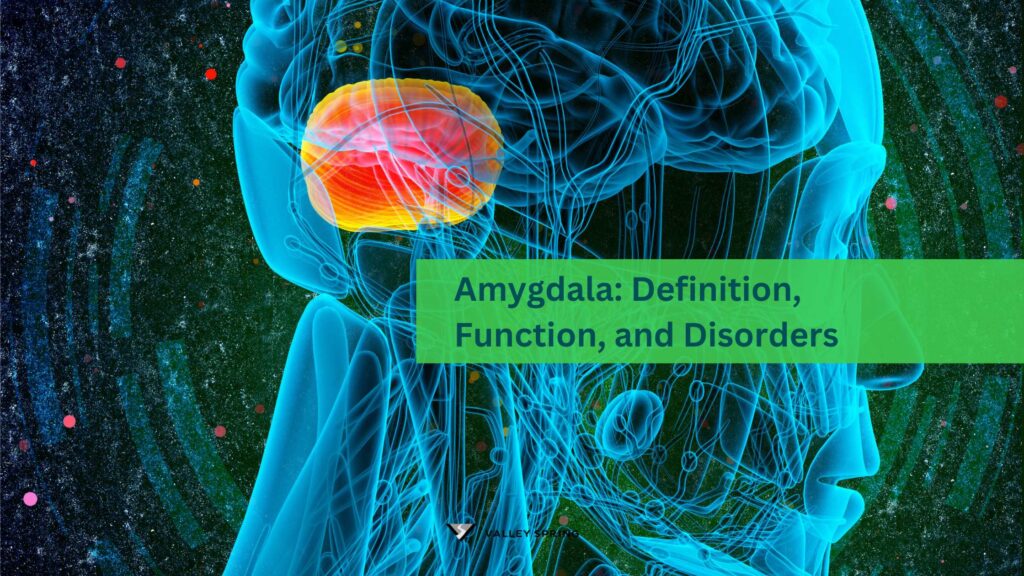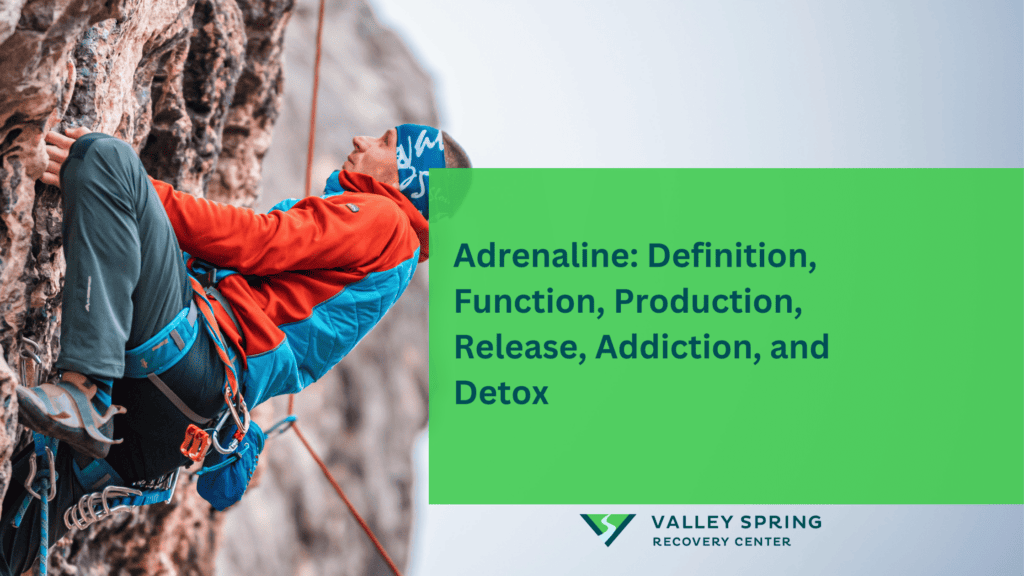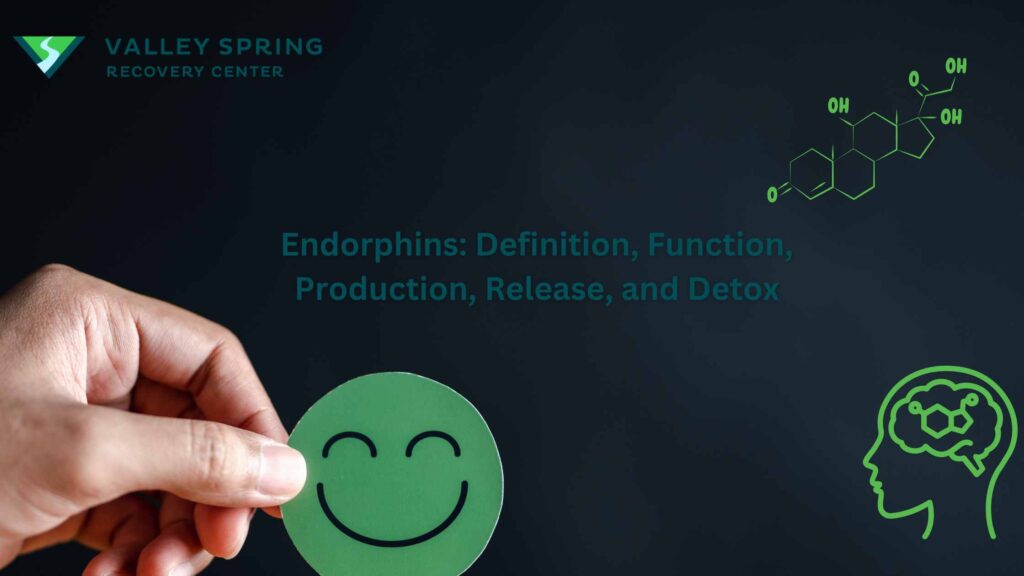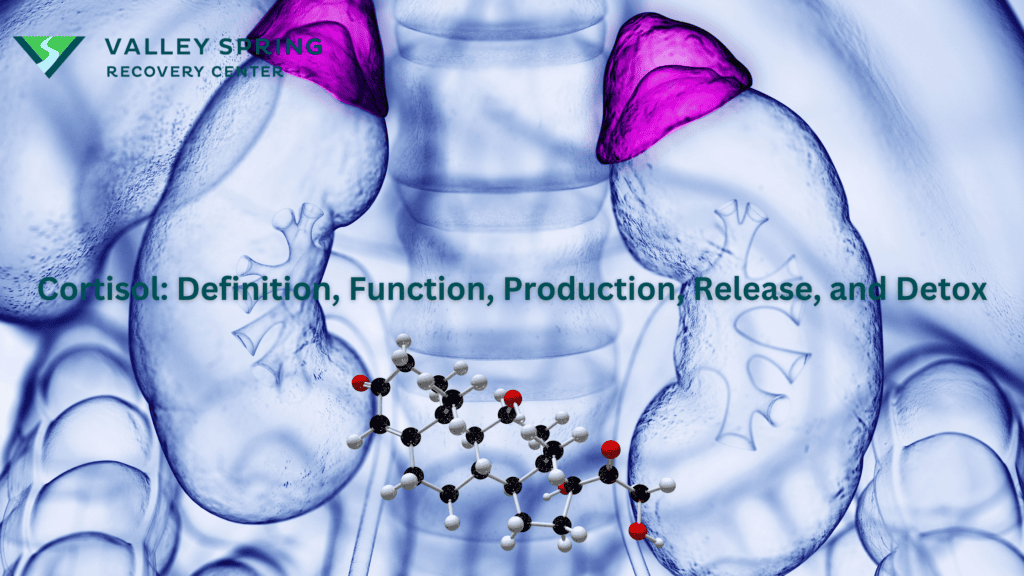Dopamine is a critical neurotransmitter, acting as a chemical messenger in the brain to transmit signals between neurons. Its primary role is significant in both our physical and psychological functions, influencing behavior, motivation, and reward.
One of the key functions of dopamine lies in its connection to addictive behaviors. This neurotransmitter is released following pleasurable activities, prompting the brain to remember the details of these events, including timing, context, and companionship. This mechanism underlies why certain experiences, especially those that are rewarding or pleasurable, can become addictive.
The brain naturally produces dopamine by synthesizing tyrosine, an amino acid found in protein-rich foods. This process highlights the direct connection between diet, brain chemistry, and overall well-being.
Dopamine’s release mechanism is a finely tuned process, it’s dispatched when a signal reaches the presynaptic terminal, leading to its release into the synaptic space, or the gap between neurons. This critical gap allows dopamine to perform its role as a messenger, facilitating communication across brain cells.
Understanding the production, release, and regulation of dopamine is essential for maintaining mental and physical health. Disruptions in dopamine levels can lead to various health issues, including addiction, depression, and Parkinson’s disease, underscoring the need for balance in dopamine-related processes.
What is dopamine?
Dopamine is a hormone, and a neurotransmitter, or a chemical messenger in the brain that sends information from one cell to another across a gap. These messages are in the form of signals in the brain as well as other parts of the body. The neurotransmitter contributes to the development of addiction because it is released following a rewarding or euphoric experience. This burst of dopamine sends a message to the brain that a pleasurable event worth remembering, and repeating is happening which leads to addiction.
Dopamine belongs to a class of neurotransmitters known as monoamines. These are neuromodulators and neurotransmitters that have one amino acid, and a ring connected by a two-carbon chain (-CH2-CH2-). Monoamines are obtained from aromatic amino acids such as tryptophan, phenylalanine, tyrosine, and thyroid hormones via the action of amino acid decarboxylase enzymes.
What Is The Role of dopamine in addiction?
Dopamine plays a major role in the development of addictive behaviors as it is the neurotransmitter that is responsible for reinforcing behaviors linked to addiction. People who are engaged in addictive behaviors normally experience an increased level of dopamine in the brain’s reward system. This induces feelings of happiness and reinforces the desire to engage in the behavior repeatedly.
Dopamine release signals cause changes in the neurons that make it easier for the person engaging in the feel-good behavior to engage in it regularly without thinking about it. This leads to the development of addictive behavior. Since dopamine also contributes to encoding cues linked to pleasurable events, addictive behavior is reinforced. In addition, the encoded information in the brain drives the person to actively seek out the dopamine rush
- Reward and Pleasure: Dopamine signals reward, making certain activities feel pleasurable. Addictive substances cause a surge in dopamine, reinforcing the desire to repeat the activity.
- Craving and Compulsion: High dopamine levels create cravings, leading to compulsive behavior as the brain seeks the pleasure associated with the substance.
- Tolerance Development: Over time, the brain requires more of the substance to achieve the same dopamine surge, leading to increased use and addiction risk.
- Withdrawal and Relapse: Low dopamine levels during withdrawal can result in discomfort and mood swings, often leading to relapse to restore dopamine balance.
- Impact on Brain Function: Chronic substance abuse can alter the brain’s dopamine system, affecting motivation, learning, and behavioral control, contributing to the cycle of addiction.
| Aspect of Addiction | Role of Dopamine Levels |
|---|---|
| Reward and Pleasure | Signals reward, making activities feel pleasurable. Addictive substances surge dopamine, reinforcing desire to repeat the activity. |
| Craving and Compulsion | Creates cravings, leading to compulsive behavior as the brain seeks the pleasure associated with the substance. |
| Tolerance Development | Brain requires more of the substance to achieve the same dopamine surge, increasing use and addiction risk. |
| Withdrawal and Relapse | Low dopamine levels during withdrawal cause discomfort and mood swings, leading to relapse to restore balance. |
| Impact on Brain Function | Alters the brain’s dopamine system, affecting motivation, learning, and behavioral control, contributing to addiction cycle. |
What Is The Dopamine Dysregulation Hypothesis?
The dopamine dysregulation hypothesis stipulates that constant engagement in addictive behavior interferes with the normal functioning of dopamine pathways in the brain. The initial use of addictive substances produces intense feelings of pleasure and reinforces the behavior.
However, continued use of substances causes changes such as downregulation in dopamine receptors. This minimizes the production and effects of dopamine over time driving the addict to seek higher doses of the substance to increase the same pleasure. At the same time, the drive to engage in ordinary rewarding activities such as eating, and social human interactions take backstage, as the compulsion to seek out addictive substances or behaviors takes priority.
What is The Function of Dopamine?
Dopamine affects 3 systems that are essential to human function which are listed below:
1. Reward and Pleasure Pathways
The brain’s reward and pleasure region is also known as the mesolimbic system. This part of the brain is responsible for mediating the cognitive, and physiological processing of rewards, and pleasure. When you engage in rewarding or pleasurable activities such as gambling, ingesting recreational substances, or eating cookies, dopamine is released into the pathways of the mesolimbic system. This release of a burst of dopamine in the reward system is aimed at informing the brain that it should remember the pleasurable event that is taking place.
2. Motivation and reinforcement
When dopamine is released following a rewarding experience, the brain takes note and stores the following information:
- The stimuli that caused the pleasurable or rewarding feeling could be food, sex, gambling, or substance.
- Environmental cues linked to the sensation that will help you find it again- these could be the people you were with, the time of the day it occurred, and the activities you were engaged in when the rewarding sensation occurred.
While dopamine is not directly responsible for euphoria or pleasurable feelings, it reinforces the good feelings by associating them with the urge to do them again. Large doses of dopamine released as a result of intense feelings of euphoria, and pleasure train the brain to seek out recreational substances, and other habit-forming behaviors, leading to the development of addiction.
3. Regulation of mood and emotions
Dopamine works alongside other hormones and neurotransmitters such as oxytocin, endorphins, and serotonin to regulate your moods and emotions. Low dopamine levels in your brain usually cause mental conditions such as anxiety, depression, hallucinations, Parkinson’s disease, and schizophrenia.
How is dopamine produced?
Dopamine is produced in the brain in two phases: First, tyrosine, an amino acid is changed into another amino acid known as L-dopa. Then L-dopa is converted by enzymes into dopamine.
Tyrosine is acquired from foods such as poultry products, beef, avocadoes, and low-fat dairy products, as well as legumes. The amino acid is transported is transported across the blood-brain barrier into the brain to serve as a precursor of dopamine.
When ready, dopamine is packed into synaptic vesicles within dopaminergic neurons. The vesicles are stored at the neuron’s presynaptic terminals. When a signal is sent to the presynaptic terminal, dopamine is released into the synaptic cleft. This is a gap between the presynaptic terminal of one neuron and the postsynaptic terminal of another.
How is dopamine released?
Dopamine release in the brain involves a precise sequence of events, triggered by neuron stimulation from either internal processes or external stimuli. According to the 2019 study by Liu, Changliang, and Pascal S Kaeser titled “Mechanisms and regulation of dopamine release.”
- Neuron Stimulation: The process begins when neurons are stimulated, setting the stage for dopamine release. This stimulation can be independent of somatic action potential firing, highlighting the nuanced mechanisms behind dopamine signaling [Zhou et al., 2001].
- Action Potential: Following stimulation, neurons generate an action potential, an electrical impulse critical for transmitting signals.
- Calcium Influx: The action potential reaches the presynaptic terminal, causing calcium channels to open. The entry of calcium into the neuron is a key driver for the next steps in dopamine release [Brimblecombe et al., 2015].
- Vesicle Fusion: The influx of calcium prompts synaptic vesicles, packed with dopamine, to fuse with the presynaptic membrane.
- Dopamine Release: Dopamine is then released into the synaptic gap, ready to bind to receptors on the postsynaptic neuron. This mechanism is crucial for transmitting signals across neurons.
- Binding and Effects: Once released, dopamine binds to receptors, influencing various physiological and psychological functions, including mood, motivation, and reward processing.
- Regulation: The system ensures balance through feedback mechanisms. Dopamine levels are regulated by reuptake into the presynaptic neuron or breakdown by enzymes. Receptor sensitivity can also adjust in response to dopamine levels, maintaining homeostasis.
What Happens To Dopamine Receptors During Detox?
When a person is addicted to addictive behavior or substances the brain adapts by downregulating dopamine receptors. This leads to reduced sensitivity to dopamine.
During detox, the brain goes through major changes including alterations as dopamine receptors start to upregulate in response to the reduced levels of dopamine. The upregulation happens as the brain attempts to restore balance and sensitivity to dopamine.
The process of detoxification is normally physically and psychologically demanding as the brain works overtime to restore balance without addictive behavior. This explains why the addicted person usually experiences mood disturbances and cravings as the brain adjusts to return to equilibrium without the presence of the substance.
With time, if the addicted person does not relapse, their dopamine receptor levels stabilize, and they start to experience pleasure from natural rewards once again. The normalization of dopamine receptor functions in the brain is a crucial phase in the recovery process from addiction.
Is Rehab Effective In Fixing Dopamine Levels?
Rehabilitation programs are effective in treating and preventing addictions and the affects addiction has on dopamine levels by addressing the underlying causes of substance use, teaching coping strategies, and promoting long-term recovery. Roy A. Wise and Mykel A. Robble highlight that “most addictive drugs cause elevations in extracellular levels of the neurotransmitter dopamine,” affecting the brain’s reward mechanisms (PMID: 31905114). Furthermore, the habitual intake of addictive drugs decreases dopamine receptors in the brain, diminishing interest in non-habitual rewards.
Addiction treatment often targets the dopamine system’s role in addiction, aiming to restore balance and support recovery. Here’s how treatment addresses the dopamine-related aspects of addiction:
- Medication-Assisted Treatment (MAT): Uses medications to normalize brain chemistry, block the euphoric effects of substances, relieve physiological cravings, and stabilize body functions without the negative effects of the abused substance.
- Behavioral Therapies: Help patients engage in the treatment process, modify their attitudes and behaviors related to substance use, and increase healthy life skills. These therapies can also enhance the effectiveness of medications and help people remain in treatment longer.
- Counseling and Support Groups: Offer emotional support and understanding from others who have faced similar challenges, helping individuals cope with cravings and avoid triggers that might lead to relapse.
- Lifestyle Changes and Stress Management: Encourage practices like exercise, meditation, and healthy eating to reduce stress and improve mood, which can decrease the need for substances that artificially stimulate dopamine production.
- Relapse Prevention Education: Teaches individuals to recognize and manage relapse triggers and develop strategies to maintain dopamine balance without substance use.
By addressing the underlying dopamine imbalances and teaching coping mechanisms, treatment can help individuals overcome addiction and lead healthier lives.
Adding to the evidence, a 2004 comparative study by Greenfield et al., published in The American Journal of Drug and Alcohol Abuse, finds that rehab treatment, especially residential programs, is an effective approach to substance abuse treatment. The study emphasizes that “the longer the program, the better the effects are,” suggesting that extended care is crucial for effective recovery and long-term success in preventing relapse.
Rehab facilities offer a blend of medical detox, psychological therapy, and support systems to help individuals overcome addiction. Through therapy, patients learn to identify triggers, manage cravings, and develop healthier behaviors to replace substance use. The combination of neuroscientific insights from Wise and Robble, together with the clinical findings of Greenfield et al., underscores the importance of comprehensive and sustained treatment approaches.
How do dopamine levels affect serotonin?
Dopamine and serotonin levels influence each other in the brain’s complex chemical landscape. Generally, high dopamine levels can lower serotonin, impacting mood and emotional well-being. This balance is crucial for regulating mood, appetite, and sleep, highlighting the importance of maintaining a healthy neurotransmitter balance.
does medical marijuana affect dopamine?
Medical marijuana can affect dopamine levels, leading to increased release and enhancing feelings of pleasure and reward. However, its impact varies by individual and usage patterns. Long-term medical marijuana use might alter dopamine activity, potentially affecting motivation and reward sensitivity.
Dr. Michael Olla
All author postsShare This Post

